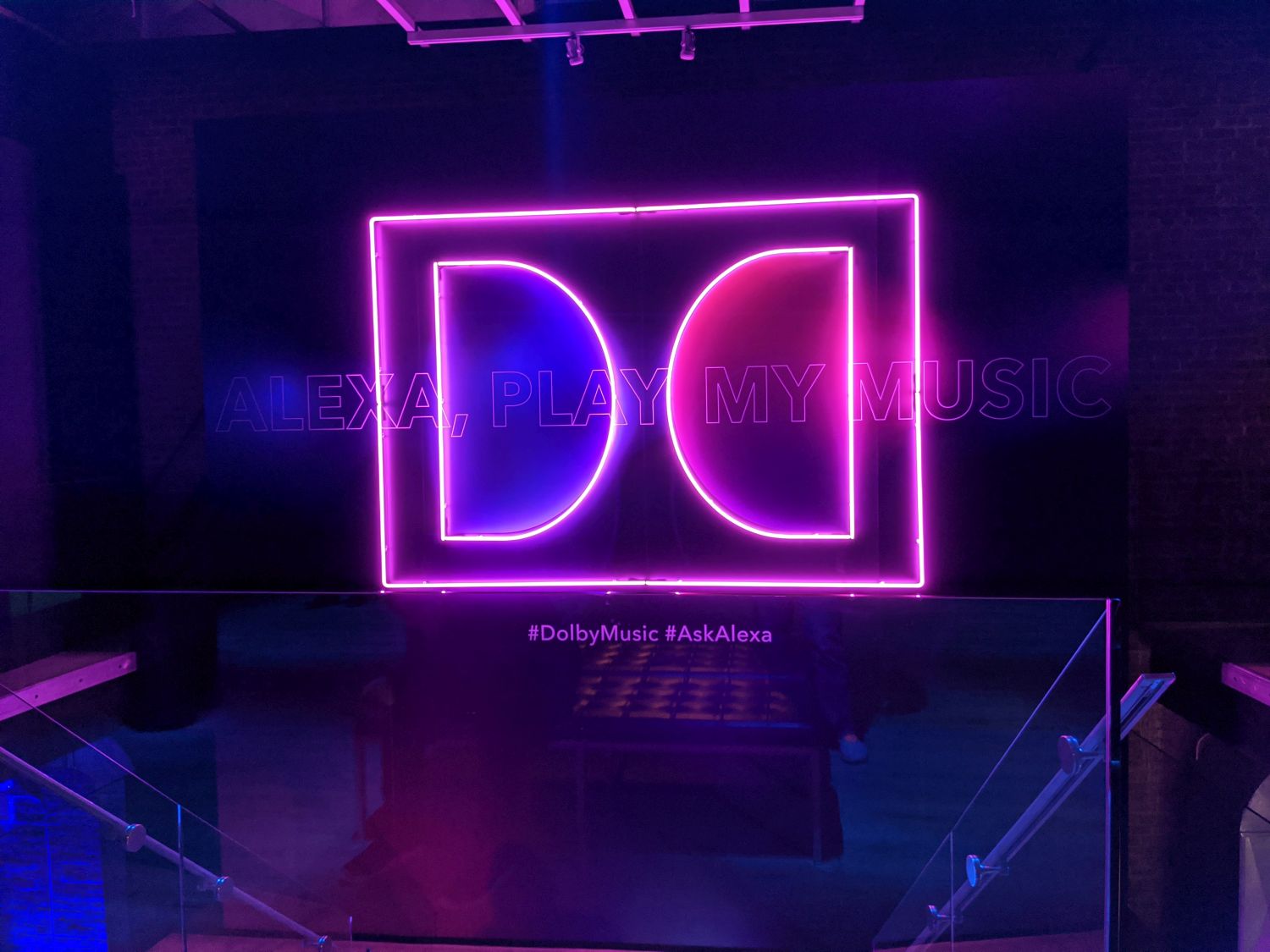Encompass sound is precisely what it feels like: a class of merchandise and applied sciences designed to immerse you in audio from all sides, all angles, and, more and more, from all heights too.
We’re going to take a really deep dive into precisely the way it works and the applied sciences that introduced us to in the present day’s cutting-edge. That features {surround} sound applied sciences, 3D audio codecs like Dolby Atmos, and the whole lot it’s worthwhile to learn about getting nice {surround} sound — together with hyperlinks to our guides on extra particular matters. Let’s begin with a take a look at the newest Dolby Atmos, at the moment some of the vital requirements to search for when placing collectively a house theater.
Objectively higher sound
Movie show audio system have at all times been in a position to crank out some critical decibels, however earlier than Dolby Atmos, they weren’t all that refined by way of their underlying tech. As an illustration, for those who had been watching an motion film and there was an explosion on the fitting aspect of the display screen, half of the audio system within the theater would all play that very same sound.
With Atmos, the sounds in a theater may now come from distinct areas decided by the skilled audio mixers that had organized them. Identified within the business as “object-based” sound know-how, Atmos allowed for as much as 128 distinct sound objects to be represented in a given scene, which may very well be routed to as much as 64 totally different audio system.
Opponents like Digital Theater Methods (DTS) quickly adopted go well with, with the corporate boasting that its DTS:X know-how may produce extra particular person audio feeds than Atmos, which was hard-capped at 64. This meant that, theoretically, theater operators had been restricted solely by their urge for food so as to add further audio system and amplification.
With the event of appropriate AV receivers, the battlefield rapidly shifted to the lounge. Right now, most high quality AV receivers assist object-based {surround} sound, and the tech that helped revitalize film theaters was made accessible within the residence.
Digital music has additionally gotten the Atmos therapy, with quite a lot of streaming providers (Tidal, Amazon Music, and Apple Music, to call just a few) already benefiting from Dolby Atmos Music, an offshoot of its theatrical, object-based sound know-how.
Atmos isn’t the one payer on this house, both, as rivals like DTS:X and Sony’s 360 Actuality Audio will look to problem Dolby for sonic supremacy within the months and years forward.
This being a top-to-bottom {surround} sound information, nonetheless, we have to journey again earlier than we are able to transfer ahead. For those who’re a layperson seeking to perceive how Atmos and its rivals can revolutionize your property theater, you’ll want a fast {surround} sound primer and a short historical past lesson earlier than constructing your setup.
Encompass sound 101
We’ll get to the historical past of {surround} sound and the specs of all of the competing codecs in only a minute — however first, let’s get the fundamentals out of the best way. Understanding just a few core ideas will assist orient you so to comply with the dialog to return, so right here’s what you need to know earlier than we get all the way down to the nitty-gritty:
The audio system
Encompass sound, at its most elementary, entails a set of stereo entrance audio system (left and proper) and a set of {surround} audio system, that are normally positioned simply to the perimeters and simply behind a central listening place. The subsequent step up entails the addition of a middle channel: A speaker positioned between the entrance left and proper audio system that’s primarily chargeable for reproducing dialogue in films. Thus, we’ve got 5 audio system concerned. We’ll be including extra audio system later (heaps extra), however for now, we are able to use this fundamental five-speaker association as a springboard for moving into the totally different codecs.
The matrix
No, we’re not speaking in regards to the sci-fi franchise starring Keanu Reeves. On this case, matrix refers back to the encoding of separate sound alerts inside a stereo supply. This method was the idea for early surround-sound codecs like Dolby Encompass and Dolby Professional Logic and was motivated partially by the restricted house for discrete data on early audio-video media, similar to VHS tape.
Professional Logic
Utilizing the matrix course of, Dolby’s Professional Logic {surround} was developed to encode separate alerts inside the principle left and proper channels. Dolby was in a position to enable residence audio units to decode two further channels of sound from media like VHS tapes, which fed the middle channel and {surround} audio system with audio. Due to the restricted house, nonetheless, matrixed {surround} alerts got here with some limitations. As an illustration, the {surround} channels in fundamental Professional Logic weren’t in stereo and had restricted bandwidth. That implies that every speaker performed the identical factor and the sound didn’t contain a lot bass or treble data.
Encompass sound historical past
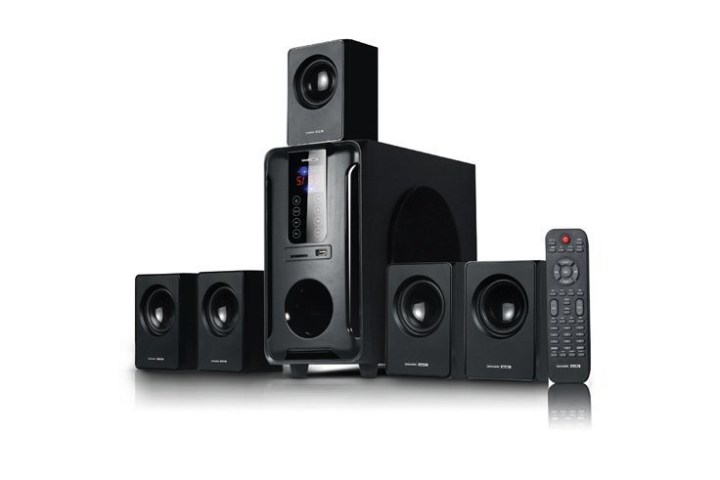
OK, so now that you recognize what {surround} sound is and what the present state-of-the-art tech is able to, let’s discuss how we bought right here.
It was the summer time of 1969 when {surround} sound first turned accessible within the residence. It was referred to as Quadraphonic sound, and it first appeared on reel-to-reel tape. Sadly, Quadraphonic sound, which offered discrete sound from 4 audio system positioned in every nook of a room, was complicated and short-lived — no due to corporations battling over codecs (sound acquainted?). Immersion in a three-dimensional audio sphere was to not be given up on, nonetheless.
In 1982, Dolby Laboratories launched Dolby Encompass, a know-how that piggybacked a {surround} sound sign onto a stereo supply by means of matrix encoding. Since then, Dolby, DTS, and others have helped advance the state of residence {surround} sound with quite a lot of iterations. Within the subsequent part, we hint this evolution — from the usual 5.1 setups to state-of-the-art, object-based {surround}.
Encompass sound takes form
Dolby Digital 5.1/AC-3: The benchmark
Keep in mind LaserDisc? Although the medium was first invented in 1978, it wasn’t till 1983, when Pioneer Electronics purchased a majority curiosity within the know-how, that it loved any form of success in North America. One of many benefits of LaserDisc (LD) was that it offered much more space for storing than VHS tape. Dolby took benefit of this and created AC-3, now referred to as Dolby Digital. This format improved on Professional Logic in that it allowed for stereo {surround} audio system that would present larger bandwidth sound. It additionally facilitated the addition of a low-frequency results channel — the “.1” in 5.1 — dealt with by a subwoofer. All the data in Dolby Digital 5.1 is discrete for every channel — no matrixing obligatory. Sorry, Keanu.
With the discharge of the movie Clear and Current Hazard on LaserDisc, the primary Dolby Digital {surround} sound hit residence theaters. By the point DVDs got here out in 1997, Dolby Digital had change into the default {surround} sound format. To at the present time, Dolby Digital 5.1 is taken into account by many to be the {surround} sound normal and is nonetheless included on most Blu-ray discs.

DTS: The rival
What’s a know-how market with out a little competitors? Dolby roughly dominated the surround-sound panorama for years. Then, in 1993, DTS got here alongside, offering its personal digital {surround} sound mixing providers for film manufacturing, first hitting theaters with Jurassic Park. The know-how finally trickled all the way down to LaserDisc and DVD however was initially accessible on a really restricted number of discs. DTS makes use of the next bit fee and, subsequently, delivers extra audio data. Consider it as just like the distinction between listening to a 256kbps and 320kbps MP3 file. The standard distinction is noticeable, however as with so many audio-related comparisons, not everybody was offered on it.
6.1: Kicking it up a notch
In an effort to boost {surround} sound by increasing the “soundstage,” residence theater corporations created 6.1, which added one other sound channel. The sixth speaker was to be positioned within the heart of the again of a room and was subsequently known as a again {surround} or rear {surround}. That is the place some confusion started to swirl.
Folks had been already used to considering of and referring to {surround} audio system (incorrectly) as “rears” as a result of they had been so usually positioned behind a seating space. Really helpful speaker placement, nonetheless, has at all times referred to as for {surround} audio system to be positioned to the perimeters and simply behind the listening place.
The purpose of the sixth speaker is to provide the listener the impression that one thing is approaching from behind or disappearing to the rear. Calling the sixth speaker a “again {surround}” or “{surround} again” speaker, whereas technically an correct description, ended up being simply plain complicated.
To make issues much more complicated, every firm supplied totally different variations of 6.1 {surround}. Dolby Digital and THX collaborated to create a model known as “EX” or “{surround} EX.” It makes use of the tried-and-true matrix encoding methodology to embed the sixth channel contained in the left and proper {surround} alerts.
DTS, then again, supplied two separate 6.1 variations. DTS-ES Discrete and DTS-ES Matrix carry out as their names recommend. With ES Discrete, particular sound data is programmed onto a DVD or Blu-ray disc, whereas DTS-ES Matrix makes use of the identical approach as Dolby Digital EX to extrapolate data from the {surround} channels.
7.1: The spawn of Blu-ray

Simply when individuals began getting used to six.1, alongside got here 7.1 together with HD DVD and Blu-ray discs as the brand new must-have {surround} format, primarily supplanting its predecessor. Like 6.1, there are a number of totally different variations of seven.1, all of which add in a second again {surround} speaker.
These {surround} results that after went to only one rear {surround} speaker may now go to two audio system in stereo. The knowledge was additionally “discrete,” which implies that each speaker bought its personal particular data. This improvement was enabled, partially, by the large storage potential of Blu-ray.
Those that purchased a devoted again {surround} speaker through the shift to six.1 now discovered themselves searching for a brand new, matched pair of again surrounds — usually the very same mannequin that they had purchased for the left and proper surrounds.
Dolby presents two totally different 7.1 {surround} variations. Dolby Digital Plus is the “lossy” model. As a substitute of utilizing matrixing, it applies lossy compression to all the discrete audio channels, which helps to take up much less house on a Blu-ray disc. Dolby TrueHD, then again, is lossless. Which means that no sound data has been eliminated throughout compression, and it’s as near the studio grasp as you may get.
DTS additionally has two 7.1 variations, which differ in the identical method as Dolby’s variations. DTS-HD is a lossy 7.1 {surround} format, whereas DTS-Grasp HD is lossless.
It’s vital to notice right here that 7.1-channel {surround} mixes aren’t at all times included on Blu-ray discs. Film studios should decide to combine for 7.1, they usually don’t at all times achieve this. There are different components concerned, too, with space for storing being chief amongst them. If a bunch of extras are positioned on a disc, there is probably not house for added {surround} data. In lots of circumstances, a 5.1 combine could be expanded to 7.1 by a matrix course of in an AV receiver. This manner, these again {surround} audio system get used, even when they don’t get discrete data. That is changing into much less frequent, nonetheless, particularly in terms of 4K Extremely HD Blu-ray discs, which regularly assist a number of seven-channel mixes.
9.1: Professional Logic makes a comeback
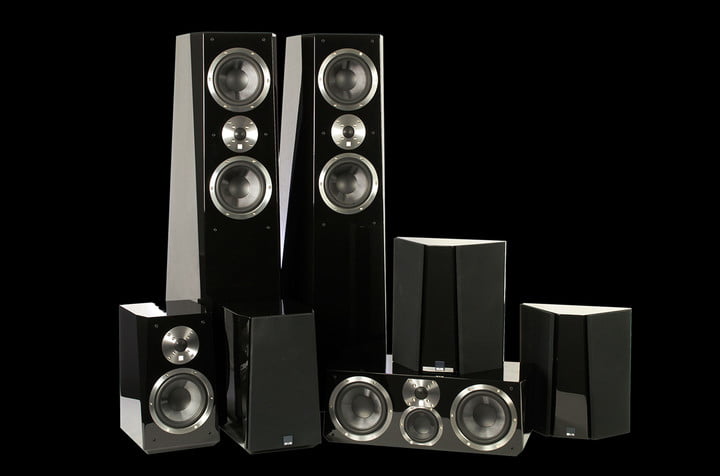
For those who’ve been searching for a receiver, you’ll have observed that many provide a number of totally different variations of Professional Logic processing. Within the fashionable Professional Logic household, we now have Professional Logic II, Professional Logic IIx, and Professional Logic IIz. Earlier than we proceed, let’s take a fast take a look at what every of them does.
Professional Logic II
Utilizing the identical matrixed four-channel sound as the unique Professional Logic, Professional Logic II can create a 5.1 {surround} sound combine from a stereo supply. Professional Logic II additionally has one other trick up its sleeve: It might separate the {surround} sign into stereo left and proper channels as an alternative of the unique Professional Logic’s dual-mono presentation. This processing mode is usually used when watching non-HD TV channels with a stereo-only audio combine.
Professional Logic IIx
In case your video supply is offered in 5.1 {surround} — and your property theater system helps extra audio system — Professional Logic IIx can take that blend and develop it to six.1 or 7.1. Professional Logic IIx is subdivided into film, music, and recreation modes.
Professional Logic IIz
Professional Logic IIz permits the addition of two “entrance peak” audio system which might be positioned above and between the principle stereo audio system. This type of matrix processing goals so as to add extra depth and house to a soundtrack by outputting sounds from a complete new location within the room. Since IIz processing could be engaged with a 7.1 soundtrack, the ensuing format may very well be referred to as 9.1.
Regardless of the addition of those peak channels, Professional Logic IIz doesn’t allow a real 3D placement of sounds. To allow that, you’ll want Dolby Atmos or DTS:X, which we describe beneath.
What about 7.2, 9.2, or 11.2?
As we talked about beforehand, the “.1” in 5.1, 7.1, and so forth., refers back to the LFE (low-frequency results) channel in a {surround} soundtrack, which is dealt with by a subwoofer. Including “.2” merely implies that a receiver has two subwoofer outputs as an alternative of 1. Each connections output the identical data since, so far as Dolby and DTS are involved, there is just one subwoofer observe. Since AV receiver producers needed to market the extra subwoofer output, the notion of utilizing “.2” was adopted.
For most individuals, a single subwoofer will present ample low-end bass and rumble. Nonetheless, including a second sub can improve this impact, particularly in bigger media rooms. Take a look at our subwoofer placement information to be taught why a second sub is likely to be best for you.
Audyssey DSX and DSX 2
Audyssey, an organization greatest recognized for its auto-calibration software program present in lots of in the present day’s AV receivers, has its personal {surround} answer referred to as Audyssey DSX. DSX additionally permits for added audio system past the core 5.1 and seven.1 {surround} codecs, upmixing 5.1 and seven.1 alerts so as to add extra channels. With the addition of entrance width and entrance peak channels on prime of a 7.1 system, Audyssey permits for 11.1 channels of {surround} sound.
There’s additionally Audyssey DSX 2, which provides upmixing of stereo alerts to {surround} sound. With the appearance of object-based 3D codecs like Dolby Atmos and DTS:X lately, nonetheless, Audyssey has seen a decline.
3D/object-based {surround} sound
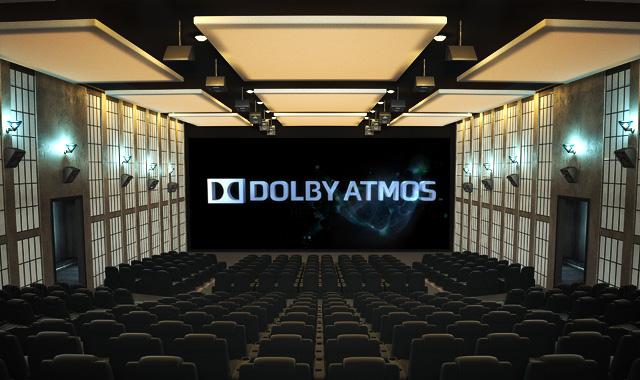
As we talked about earlier, the newest and best improvement in {surround} sound is called “object-based” or “3D” {surround}. For viewers, “3D” presents the very best description of this know-how due to its potential to make sounds really feel as if they’re transferring by means of house. As an illustration, you would possibly hear a helicopter take off from in entrance of you, hover over your head, after which disappear into the space behind you.
“Object-based,” then again, is the moniker most well-liked by the sound professionals who create these 3D soundtracks as a result of it describes their potential to maneuver a single sound-producing object (like a helicopter) anyplace in 3D house.
This immersive hemisphere of sound is made attainable by including discrete channels for ceiling-mounted or ceiling-facing audio system in AV receivers at residence.
As a result of these channels not have to extrapolate their alerts from audio working to different audio system as they did with Professional Logic IIz 7.1, they get their very own quantity. A 5.1.2 system, for instance, would function the standard 5 channels and a subwoofer, however it might additionally function two extra audio system including peak data in stereo on the entrance. A 5.1.4 system would add 4 extra peak channels to five.1, together with two on the entrance, two on the rear, and so forth.
Dolby Atmos
This shouldn’t come as a shock after studying the remainder of this text, however Dolby is the present chief in object-based {surround} sound know-how. We’ve been over Atmos’ bid to revolutionize the movie show expertise, however what about residence theaters?
Atmos within the residence
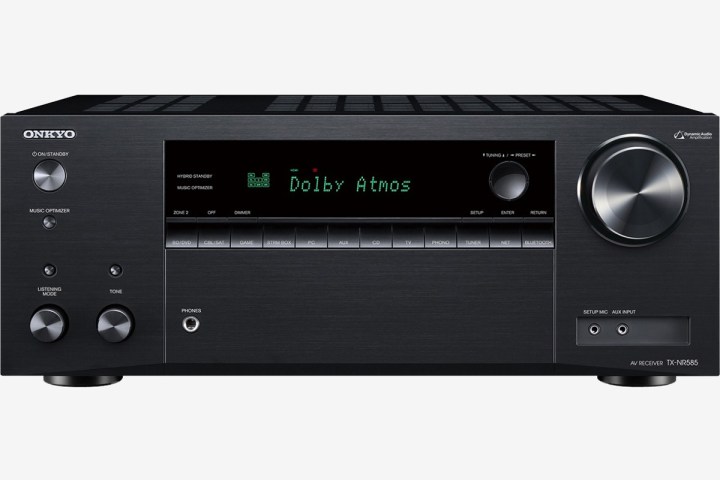
Atmos debuted on appropriate AV receivers in 2015, however in a way more restricted capability than the skilled format. As talked about above, the most typical configurations are 5.1.2 or 5.1.4, which add two and 4 peak audio system to a standard 5.1 {surround} setup respectively, although Dolby helps a lot bigger configurations. Atmos took off comparatively rapidly, and most AV receivers above the low-end vary of the spectrum now assist the format. Actually, each receiver on the listing of our favourite AV receivers helps Atmos, even fashions priced at $500 or much less.
In 2015, Yamaha launched the primary Atmos-capable soundbar, the YSP-5600, which makes use of up-firing drivers to bounce hold forth the ceiling. Since then, soundbar producers have absolutely embraced Dolby Atmos. Some obtain the Atmos impact utilizing devoted wi-fi {surround} audio system with up-firing drivers to enrich the entrance audio system within the bar. Others use a way referred to as virtualized Dolby Atmos to convincingly simulate the Atmos impact utilizing fewer audio system.
Some TVs, like LG’s line of excellent OLED TVs, declare Dolby Atmos assist by means of the TV’s built-in audio system. As a result of Dolby Atmos could be calibrated for as few as two channels, we suppose that is technically correct. Nonetheless, consumers must be conscious that two-channel Atmos won’t ever sound nearly as good as discrete 5.1.2 or higher Atmos.
Films with Dolby Atmos soundtracks at the moment are quite common on Blu-ray and Extremely HD Blu-ray discs. Furthermore, streaming websites like Netflix, Vudu, Amazon Prime Video, Disney+, and Apple TV+ all provide a number of Atmos films and reveals. Atmos is even beginning to seem in some reside broadcasts. Current examples embody the 2018 Winter Olympics, the NHRA’s reside drag-racing occasions, and even just a few music festivals.
One factor to bear in mind with Dolby Atmos: It’s a finicky beast. To be able to hear Dolby Atmos sound, each a part of your property theater system — from the supply to the audio system — must assist it. Right here’s our full information to getting nice Dolby Atmos sound.
Dolby Atmos Music
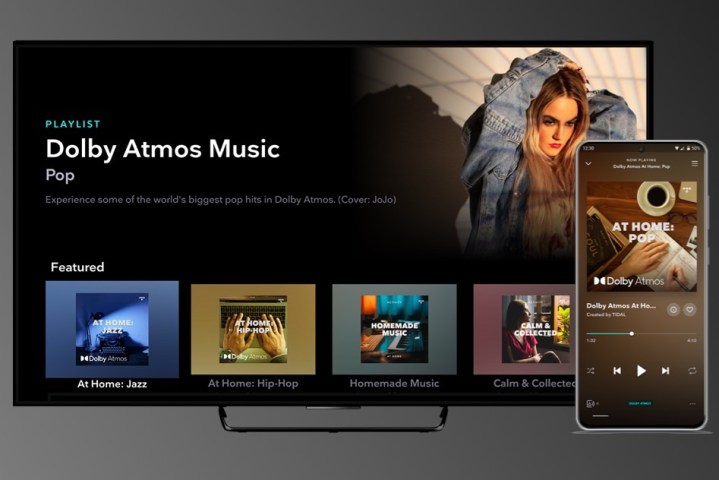
Although nonetheless in its early levels, Dolby Labs has been working with main file labels and streaming providers to develop using Dolby Atmos know-how for music manufacturing. The idea is straightforward: Dolby Atmos Music makes use of all the identical object-oriented 3D audio instruments because the film soundtrack model however places them within the arms {of professional} music producers.
The result’s immersive music that goes properly past what conventional two-channel stereo and even quadraphonic sound can obtain. Sadly, Dolby Atmos Music could be very restricted in the intervening time. The one approach to hear it utilizing a Dolby Atmos-equipped residence theater is to purchase one of many only a few Blu-ray discs that comprise a Dolby Atmos Music combine, just like the lately remastered and rereleased Kick by INXS.
Amazon Music HD lately turned the primary music streaming service to supply Dolby Atmos Music tracks, however the one method you possibly can hear them is through Amazon’s Echo Studio 3D sensible speaker.
In just a few choose golf equipment, Dolby Atmos Music is being utilized by DJs and different reside performers to supply an immersive music setting for dance flooring.
Hopefully, Dolby will quickly open the floodgates on Dolby Atmos Music and discover extra methods for folk to expertise it.
It’s price noting that Sony additionally has a 3D immersive music format referred to as Sony 360 Actuality Audio that competes with Dolby Atmos Music. It too could be discovered on some streaming providers, however as with Atmos Music, the units wanted to listen to it are restricted to only a few choices for the second.
DTS:X
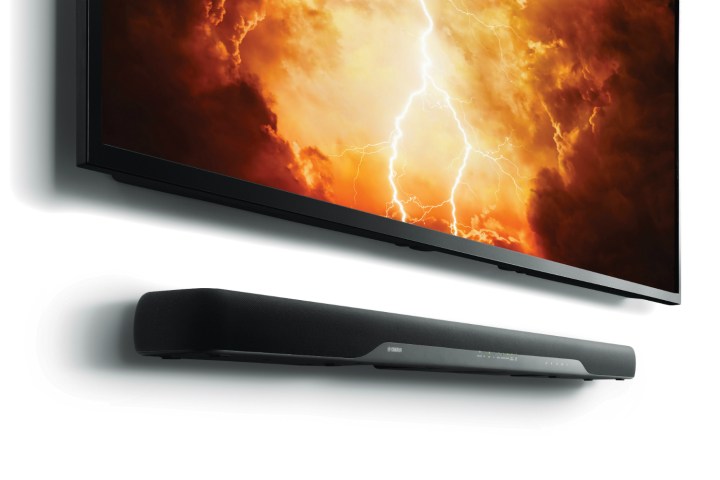
Simply because it does with different kinds of {surround} sound, DTS has its personal model of object-based audio, DTS:X, which was unveiled in 2015. DTS:X goals to be extra versatile and accessible than Atmos, making use of preexisting speaker layouts in theaters and supporting as much as 32 totally different speaker configurations within the residence.
Whereas DTS:X was beforehand tacked on in updates for Atmos-enabled AV receivers, it’s now accessible with newer AV receivers proper out of the field. Firms like Lionsgate and Paramount provide residence releases in DTS:X, however its lack of widespread adoption on disc-based media — and 0 adoption amongst streaming providers — is its greatest limiting issue.
DTS Digital:X
DTS additionally acknowledges that not all film lovers have the house or the time to place collectively an object-based sound system. Analysis gathered by DTS confirmed that lower than 30% of shoppers really join peak audio system to their methods, and fewer than 50% even trouble connecting {surround} audio system.
To that finish, the corporate developed DTS Digital:X, which employs digital sign processing (DSP) in an effort to supply the identical spatial cues {that a} conventional DTS:X system would supply, however over a smaller variety of audio system, even for those who’ve solely bought two. This know-how first rolled out in soundbars, which is sensible, as they usually solely embody a separate subwoofer and possibly a pair of satellite tv for pc audio system at most. Since then, corporations like Denon and Marantz have added assist for DTS Digital:X to their receivers, whereas Sony has its personal digital {surround} soundbar that reads DTS:X and Atmos mixes.
Technically talking, “virtualized” Dolby Atmos and DTS Digital:X are very related; nonetheless, Dolby prefers to not distinguish between Dolby Atmos implementations. So far as it’s involved, Atmos is Atmos, whether or not it’s virtualized by means of two, three, or 5 channels, or absolutely baked utilizing a discrete 5.1.2 or higher speaker system.
Auro-3D
Although chances are you’ll not have heard of Auro-3D till now, it was on the scene properly earlier than DTS:X or Atmos appeared. The know-how was introduced in 2006 to be used in theaters however wasn’t accessible for residence theater methods. Because of Denon and Marantz pushing it by means of as a firmware improve, now you can use it with your property audio system — although it’s important to pay for it.
Regardless of obvious likeness to Dolby Atmos, Auro-3D creates a surround-sound expertise by means of a three-tiered sound system. A number of audio system actually showcase this sort of layered sound. We advocate eleven audio system to get probably the most out of the sound, making Auro-3D the most costly setup you possibly can recreate at residence. As a result of Auro-3D normally makes use of a single overhead channel, its speaker configurations aren’t optimum when used with Dolby Atmos sound.
We haven’t seen a development in recognition for Auro-3D in the US, however contemplating its pervasive utilization in Europe and Japan, it’s solely a matter of time.
MPEG-H
MPEG-H refers to a complete household of audio and video requirements, however for {surround} sound, we’re excited by a particular a part of it: the assist for 3D Audio. On this regard, MPEG-H is similar to Dolby Atmos and permits builders to set an unbelievable quantity of audio objects in a 3D house. It’s additionally a particularly versatile normal, permitting builders to provide customers the choice to regulate particular components of the sound like dialogue or selecting the place particular sounds come from. We have now a extra in-depth information to MPEG-H proper right here.
Whereas MPEG-H isn’t as frequent in North America, yow will discover it on Brazilian and South Korean broadcasts, in addition to quite a lot of residence theater merchandise from manufacturers like Denon and Marantz. As the usual turns into extra fashionable, particularly for broadcasts, it may change into a sought-after approach to watch reside TV in 3D audio.
IMAX Enhanced
Whereas it’s a newer normal, it’s additionally no shock that IMAX has its personal candidate within the residence theater {surround} sound house, referred to as IMAX Enhanced. IMAX Enhanced will get plenty of consideration for its visible enhancements, which reformat compatibility in films and switch off all different picture optimization to make the film look extra such as you’re watching it in IMAX, even as much as increasing the facet ratio.
However IMAX Enhanced additionally makes use of a part of the DTS:X codec to assist residence theaters imitate IMAX Signature Sound in an IMAX theater, together with the deep bass. This normal is new sufficient now that it’s not prone to make an impression on your property theater for just a few years. It’s additionally vital to notice that some content material that claims to be IMAX Enhanced doesn’t have any of the DTS:X audio enhancements, solely the visible modifications. That’s an issue for titles like Disney+’s IMAX Enhanced Marvel films.
In sum …
Whereas it might look like issues are getting extra difficult, studio-quality residence theater sound is extra accessible than ever. Improvements in “object-based” or “3D” {surround} sound, mixed with the addition of devoted audio system to the usual 5.1 setup have upped the ante, certain — however you don’t must be a sound engineer or audiophile to create an immersive expertise at residence. A little bit little bit of analysis goes a good distance, so hold this information helpful as you construct your setup and you shouldn’t have any hassle determining what’s best for you. Joyful viewing/listening!
Editors’ Suggestions
